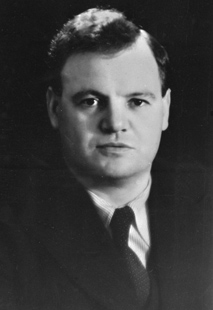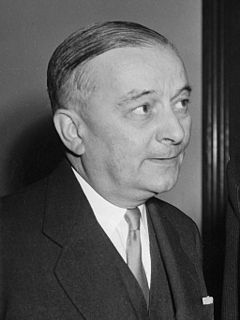| ||||||||||||||||
All 300 seats to the National Assembly | ||||||||||||||||
|---|---|---|---|---|---|---|---|---|---|---|---|---|---|---|---|---|
| Turnout | 92.8% | |||||||||||||||
| ||||||||||||||||
| ||||||||||||||||
 |
|---|
| This article is part of a series on the politics and government of Czechoslovakia |
|
| Administrative divisions |
Parliamentary elections were held in Czechoslovakia on 30 May 1948. [1] They were the first elections held under undisguised Communist rule; the Communist Party of Czechoslovakia had seized complete power three months earlier.

Czechoslovakia, or Czecho-Slovakia, was a sovereign state in Central Europe that existed from October 1918, when it declared its independence from the Austro-Hungarian Empire, until its peaceful dissolution into the Czech Republic and Slovakia on 1 January 1993.

The Czechoslovak Socialist Republic ruled Czechoslovakia from 1948 until 23 April 1990, when the country was under communist rule. Formally known as the Fourth Czechoslovak Republic, it has been regarded as a satellite state of the Soviet Union.

The Communist Party of Czechoslovakia was a Communist and Marxist–Leninist political party in Czechoslovakia that existed between 1921 and 1992. It was a member of the Comintern. Between 1929 and 1953 it was led by Klement Gottwald. After its election victory in 1946 it seized power in the 1948 Czechoslovak coup d'état and established a one-party state allied with the Soviet Union. Nationalization of virtually all private enterprises followed.
Contents
The Communists had become deeply unpopular, and all indications were that they would be voted out of office in the elections due in May. The endgame began on 13 February, when a majority of the cabinet demanded that Communist Interior Minister Vaclav Nosek stop packing the police with Communists. Nosek refused, and was supported by Prime Minister and Communist Party leader Klement Gottwald. On 21 February, 12 non-Communist ministers resigned, believing that President Edvard Beneš would side with them and force Gottwald to either back down, resign, or call early elections that the Communists would not have time to rig. Beneš initially supported their position, and refused to accept their resignations. By this time, however, Gottwald had dropped all pretense of democracy. He not only refused to resign, but demanded the appointment of a Communist-dominated government under threat of a general strike. His Communist colleagues occupied the offices of the non-Communist ministers. [2]

Klement Gottwald was a Czechoslovak Communist politician, who was the General Secretary of the Communist Party of Czechoslovakia from 1929 until 1945 and party chairman until his death in 1953. He was the 14th Prime Minister of Czechoslovakia from July 1946 until June 1948, at which point he became the president of the third republic, four months after the 1948 coup d'état in which his party seized power with the backing of the Soviet Union.

Edvard Beneš, sometimes anglicised to Edward Benesh, was a Czech politician and statesman who was President of Czechoslovakia from 1935 to 1938 and again from 1945 to 1948. He also led the Czechoslovak government-in-exile 1939 to 1945, during World War II. As President, Beneš faced two major crises which both resulted in his resignation.
Fearing Red Army intervention, Beneš gave way on 25 February and appointed a new government in accordance with Gottwald's demands. Communists and pro-Moscow Social Democrats held most of the key posts. Members of the other parties still figured, so it was still technically a coalition. However, all except Foreign Minister Jan Masaryk were fellow travellers handpicked by the Communists. On 9 May, a new constitution was approved by the now-subservient National Assembly. While it was not a completely Communist document, its Communist imprint was strong enough that Beneš refused to sign it.
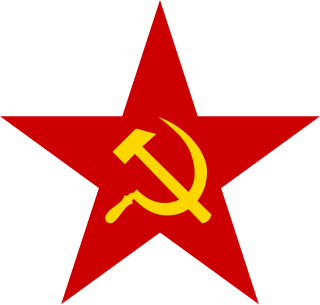
The Workers' and Peasants' Red Army, frequently shortened to Red Army was the army and the air force of the Russian Soviet Federative Socialist Republic, and, after 1922, the Union of Soviet Socialist Republics. The army was established immediately after the 1917 October Revolution. The Bolsheviks raised an army to oppose the military confederations of their adversaries during the Russian Civil War. Beginning in February 1946, the Red Army, along with the Soviet Navy, embodied the main component of the Soviet Armed Forces; taking the official name of "Soviet Army", until its dissolution in December 1991.
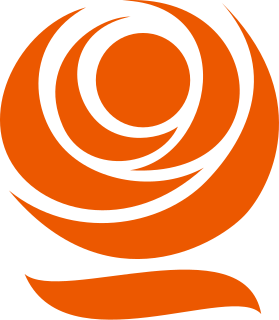
The Czech Social Democratic Party is a social-democratic political party in the Czech Republic. It holds 15 seats in the Chamber of Deputies following the 2017 legislative election, losing 35 seats. The party has been led by Jan Hamáček since 2018. It has been a junior coalition party within a minority cabinet since June 2018, and was a senior coalition party from 1998 to 2006 and from 2013 to 2017.
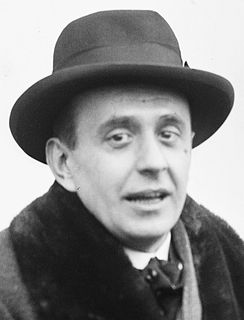
Jan Garrigue Masaryk was a Czech diplomat and politician who served as the Foreign Minister of Czechoslovakia from 1940 to 1948. American journalist John Gunther described Masaryk as "a brave, honest, turbulent, and impulsive man".
The reconfigured government scheduled elections that would set the tone for all elections until the Velvet Revolution in 1989. Voters were presented with a single list from the National Front, a postwar coalition that had been converted into a Communist-dominated patriotic organisation. Voters could only reject the list by requesting a blank ballot. [3] The Front officially won 89.2 percent of the vote. Within the Front, the Communists and their Slovak branch won a large majority, with a total of 214 seats (160 for the main party and 54 for the Slovak branch). That majority grew even larger when the Social Democrats merged with the Communists later that year. Beneš resigned three days after the elections, and Gottwald took over most presidential duties until his formal election as president 12 days later.

The Velvet Revolution or Gentle Revolution was a non-violent transition of power in what was then Czechoslovakia, occurring from 17 November to 29 December 1989. Popular demonstrations against the one-party government of the Communist Party of Czechoslovakia included students and older dissidents. The result was the end of 41 years of one-party rule in Czechoslovakia, and the subsequent dismantling of the planned economy and conversion to a parliamentary republic.

The National Front was the coalition of parties which headed the re-established Czechoslovakian government from 1945 to 1948. During the Communist era in Czechoslovakia (1948–1989) it was the vehicle for control of all political and social activity by the Communist Party of Czechoslovakia (KSČ). It was also known in English as the National Front of Czechs and Slovaks.

The Communist Party of Slovakia is a communist party in Slovakia, formed in 1992, through the merger of the Communist Party of Slovakia – 91 and the Communist League of Slovakia.
The 89.2 percent won by the Front would be the lowest vote share that it would claim during the 41 years of out-and-out Communist rule in Czechoslovakia. In subsequent elections, the Front would claim to win elections with 97 percent or more of the vote.



